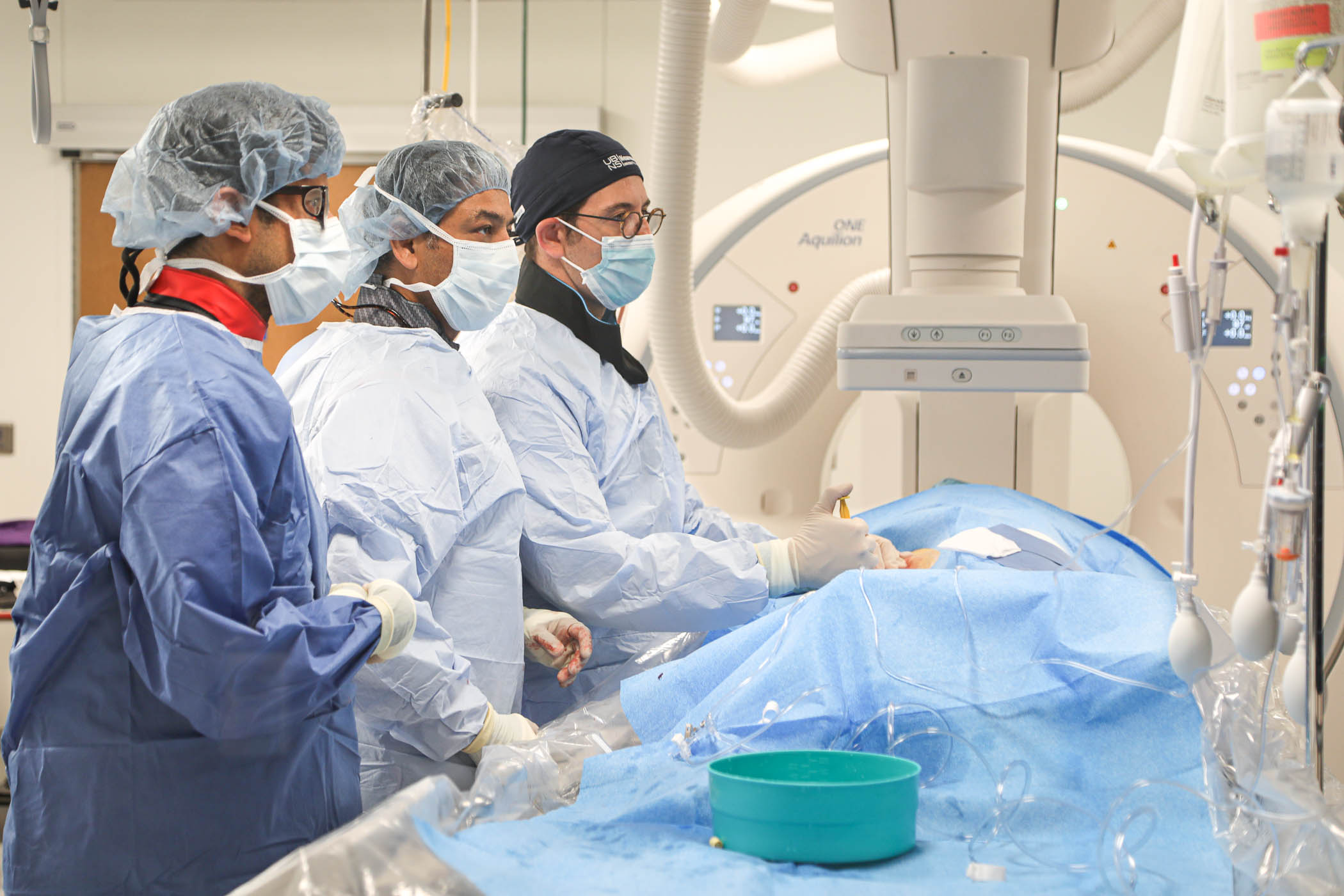Buffalo General Medical Center and Gates Vascular Institute (BMG/GVI) is excited about the Alphenix 4D CT hybrid 4-dimensional angiography and computer tomography (CT) imaging (Alphenix). They are also proud to be the first and only hospital in the U.S. to embed it in the emergency department to quickly and accurately detect and treat blood clots in the brains of stroke patients. To celebrate Alphenix’ arrival, GVI performed a live CT and cerebral angiogram on a 74-year-old male patient.
Alphenix integrates interventional radiology and CT technology to enable planning, treating, and verifying strokes in a single clinical setting, eliminating the need for patient transfers between departments, which is vitally important in time-sensitive and emergent stroke cases.
“When it comes to stroke, every second counts. Embedding this technology in the emergency department enables our teams to quickly and efficiently treat stroke patients that come through our doors,” said Elad Levy, MD, MBA, FACS, FAHA, co-director of the Gates Stroke Center and Cerebrovascular Surgery at Kaleida Health and chair and professor of Neurosurgery at the Jacobs School of Medicine and Biomedical Sciences. “Alphenix enables our teams to capture robust diagnostic images in a fraction of a second, analyze cleaner, sharper, and more defined images during stent placement or embolization, minimize dosing, and cut down on procedure times – all the key elements of stroke treatment. I am especially grateful for Kaleida Health’s persistent investments to enhance care for Western New York patients.”
Alphenix puts integrated imaging intelligence at the center of the patient’s journey, fusing multiple diagnostic imaging modalities, enhancing workflow efficiencies, and enabling intuitive clinical applications for optimized patient information. Health care providers at BGMC/GVI rely on key differentiators of the new technology to enhance the treatment of stroke patients by:
• Seamlessly integrating IR and CT technology in a single system for more streamlined workflow and ability to switch between angiography and CT.
• Enabling diagnosis, treatment, and verification across a wide range of clinical applications to deliver faster, safer, and better treatment.
• Providing innovative technologies optimized for neurovascular intervention, including the world’s first high-definition flat panel detector.
• Using hi-definition imaging mode to effortlessly zoom up to 1.5” in resolution without losing image quality for cleaner, sharper, more defined images during device placement or embolization procedures with enhanced visualization of the surrounding vessels and devices.
• Providing DoseRite technology to minimize patient X-ray exposure
• Enabling clinicians to move the system, not the patient, and utilize the new tilting cradle table.
“We installed this revolutionary system to offer our patients the most advanced interventional technology,” explained Dr. Adnan Siddiqui, director of neurological stroke services at Kaleida Health and chief executive officer and chief medical officer at the Jacobs Institute. “I’m proud to be part of a team that works tirelessly day in and day out, advocating for, and improving the lives of our patients. I have no doubt that the way our team is utilizing this technology right here in Western New York will change the way stroke is treated and managed around the world.”
For more information about the Stroke Care Center at Gates Vascular Institute, visit https://www.kaleidahealth.org/gvi/Services/#stroke











